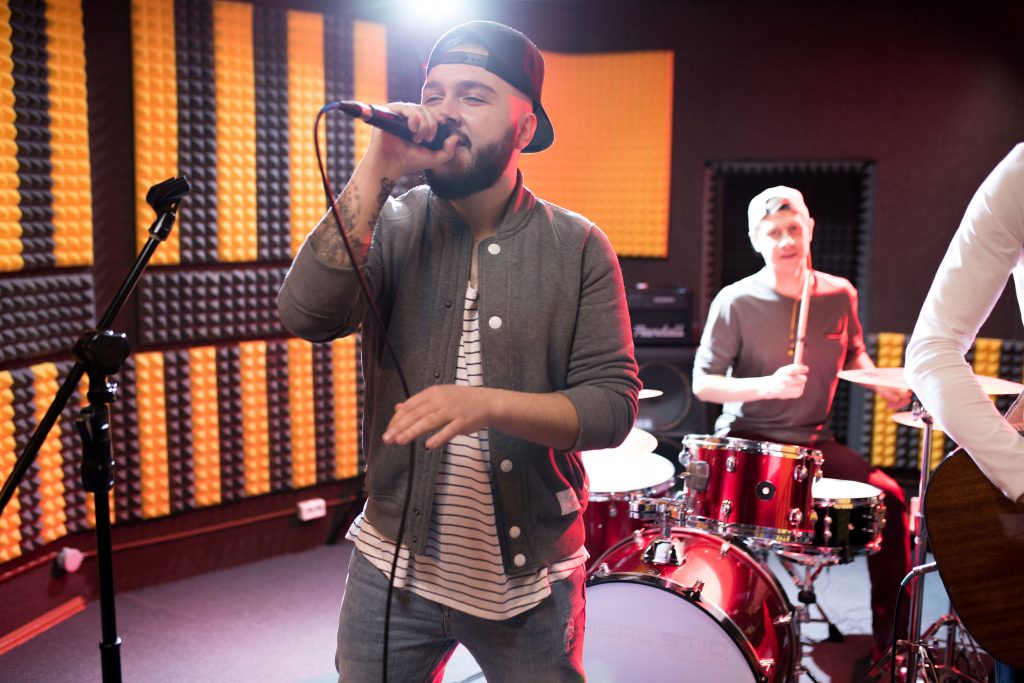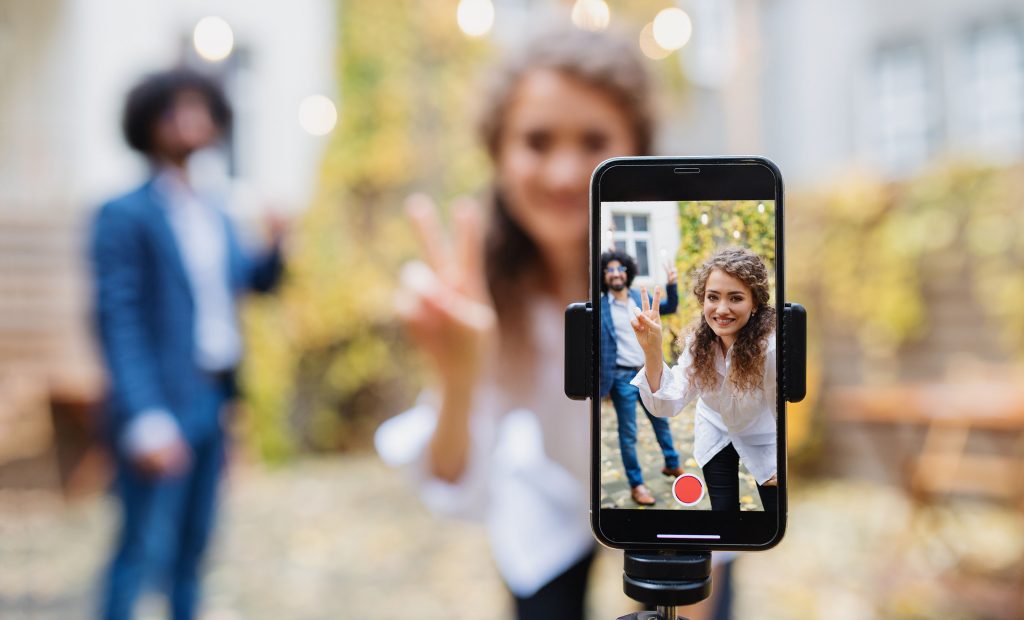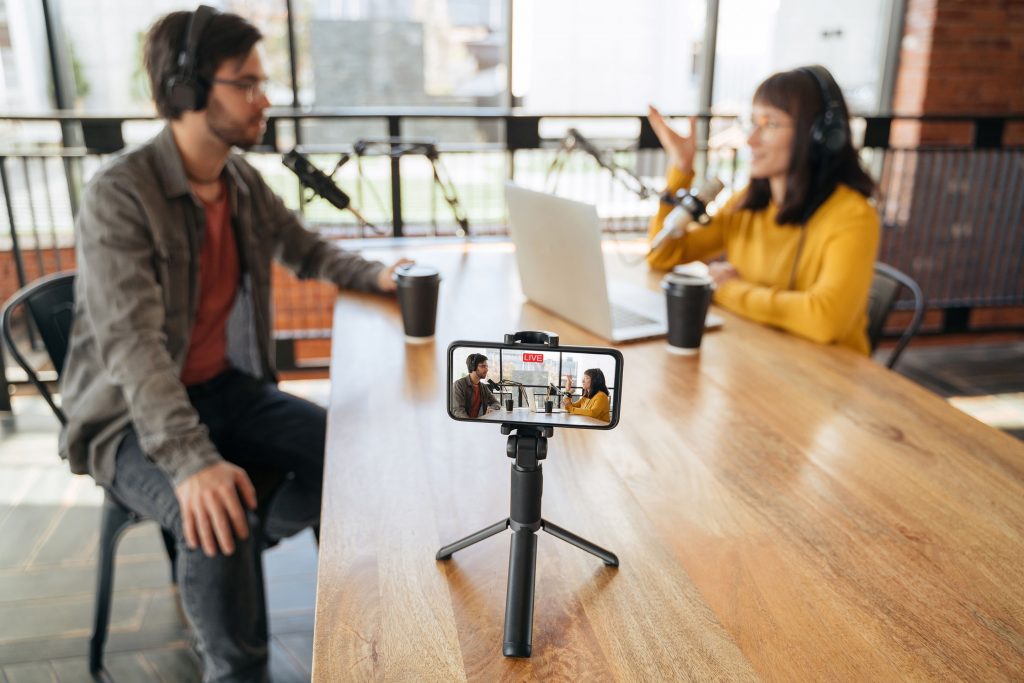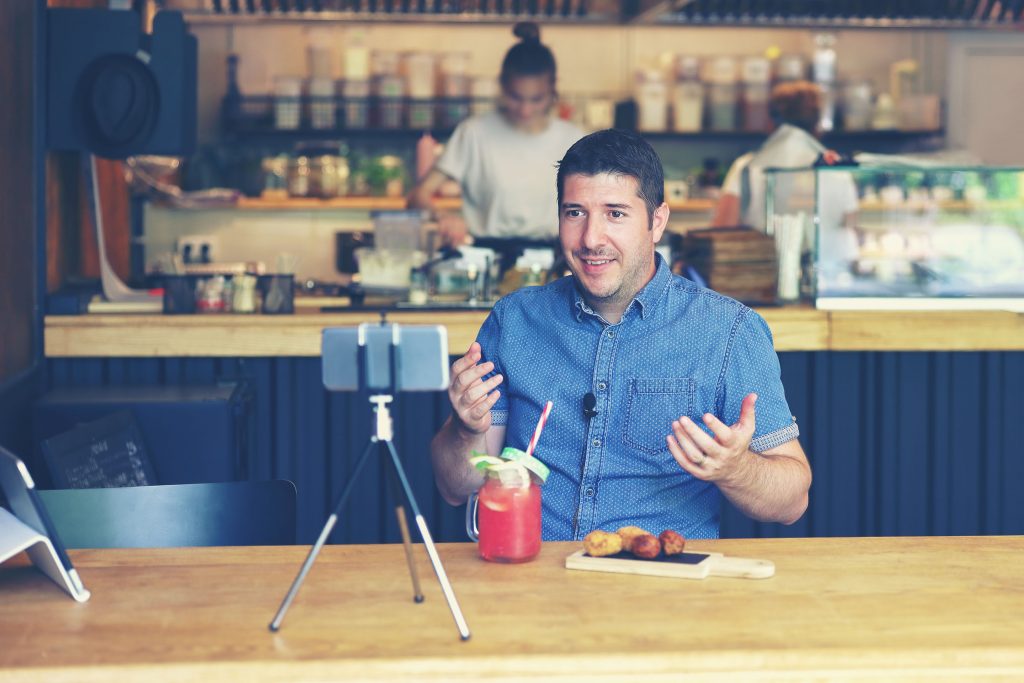The top YouTubers may have vastly different content, but they have two things in common.
They all look and sound good.
And that doesn’t necessarily mean they have professional-level production. Rather, their video production amplifies their message rather than distracting from it.
When it comes to audio, your voice doesn’t need to have polished sound like you’re a guest on The Howard Stern Show. But it does need to be clear and intelligible to your audience.
When you consider the narrow frequency range and low output of speakers on phones and laptops, it becomes apparent that you need to ensure your audio is translating across all devices.
In most cases you’ve got just several second to grab people’s attention. And if your audio level is too low, is distorted, or is flat and muffled-sounding, there’s a good chance you’ll lose people that would have otherwise been interested.
Choosing the Right Equipment
Today there are three main devices people use to make YouTube videos: their phone, laptop, or digital camera.
Many YouTuber use a combination of these devices to shoot their videos. So, for example they may use their laptop to record the audio and their phone to capture the picture.
Depending on the devices you choose, the complimentary equipment needed to record good sound can vary quite a bit. For example, if you want to record audio with your laptop, you’ll get the best results with either a USB mic or an analog XLR mic plugged into a USB audio interface. In contrast your phone lacks the same connectivity options so a different setup is necessary.
More than ever people are solely using their phones to record videos right in the app. Additionally, the rise of live video makes it necessary for social media creators to streamline their production processes so their video looks and sounds good without post-production.

1. Recording High-Quality Audio on Your Laptop for YouTube
If you want the greatest level of control over your sound, recording the audio to your laptop is ideal.
For musicians and involved video productions, it’s a must. For simple videos with speech only, it’s not necessary in most cases, but many YouTubers like the look and sound of speaking into a mic rather than a clip-on or lapel microphone.
USB mics provide an attractive option for vloggers.
You’ve probably seen your favorite YouTubers use mics like the Blue Yeti. Not only are USB mics cheaper than other digital recording methods, but it’s very straight-forward in terms of connectivity as well. You can ditch the cables needed with an XLR mic and USB audio interface, and plug the mic directly into your laptop. This reduces set up time so you can begin recording your videos right away.
The drawback to recording audio and video separately is you’ll need to synch it together manually. You can import the separate video and audio files into a video editing program like Final Cut Pro or Adobe Premiere Pro to line it up.
This additional step isn’t a big deal if you already plan to make adjustments to your videos. But for raw selfie videos that work well as YouTube Shorts, it can slow down your workflow.
Using the Headphone/Mic Jack
For YouTubers that are starting out and don’t have existing pro audio equipment, plugging a gaming headset or inexpensive mic directly into the 1/8-inch headphone/mic jack is worth a shot.
The headphone/mic jack isn’t intended for pro audio applications, so even if you connect a fantastic mic to it, the sound quality typically won’t live up to its potential.
Hands-Free Headset (with 1/8-inch Jack)
Many gamers already own a headset, and if you do it’s worth testing for your videos if you like how it looks on camera.
The nice thing about headsets is you don’t have to be conscious of how close you are to the mic or how its positioned. This reduces audio production variables and makes the process simple.
XLR Mic with Adapter
This is a purely analog, old school approach as it give you access to classic mics like the Shure SM58 you may have used before.
You just need an adapter that changes the XLR connector to a 1/8-inch audio jack. So, you can invest your money in the mic, not the complementary gear that may become obsolete sooner than expected.

Using USB Devices
Looking for the best way to get great sound? USB mics and USB audio interfaces convert the signal from your mic to digital effectively and easily. The audio converters found in these devices are almost always much better than converters built into your computer.
USB mics are ideal for YouTubers, vloggers and podcasters because it’s the easiest USB option to use. Plus, its cost-effective because it only has the features many solo content creators need.
USB Microphone
Those who need just one mic, and want a simple solution they can fire up quickly should consider getting a USB mic. Essentially, it’s like having a USB audio interface and mic built into one device.
USB Audio Interface with XLR Mic
YouTubers that want to produce music, make comedy skits, or need to use multiple mics will want to go with a setup based around a USB interface over a USB mic.

2. Recording Videos that Sound Good with Your Phone
Thanks to apps like TikTok and Instagram, creators have experienced the simplicity of recording content with their phone and very little additional equipment.
Top-end smartphones shoot amazing video. However, if you use the internal mic built into your device the audio can often leave a lot to be desired.
While finding the best connectivity option is a bit trickier than with PCs, you can use an external mic with your smartphone. It must be done wirelessly with Bluetooth or through one of the connectors such as the headphone jack or charger port.
Connecting via Bluetooth
Want to record good-quality audio wirelessly with your phone? Bluetooth mics and XLR mic transmitters are newer technologies that deserve a look.
Bluetooth Microphone
This is an interesting option that marries Bluetooth technology with the mic itself. Inexpensive electret mic capsules are found inside, so it’s a consumer audio solution rather than a professional one.
XLR-Bluetooth Transmitter with XLR Mic
If you want to use a pro mic and send the digital signal wirelessly to your phone, you’re in luck. XLR-Bluetooth transmitters allow you to do just that!
This solution gives you the best of both worlds. You have a classic mic that is road-tested and will always be useful, plus a separate Bluetooth transmitter to keep up with the latest wireless technology.

Connecting via TRRS Headphone Jack
Headphone jacks have been removed from many smartphones, but if you have one, it provides a reliable analog connection.
When you go this route, your computer handles the analog-to-digital audio conversion. Smartphones have integrated audio which gets the job done but isn’t the best for converting analog audio to digital. Thus, it’s a start if you’ve got a good mic, but it won’t give you the best sound possible due to the lack of professional preamps and converters.
TRRS Microphone
Inexpensive clip-on mics sometimes have an analog TRRS connector which makes it ideal for plugging directly into your phone’s headphone jack.
XLR-TRRS Adapter with XLR Mic
Pro dynamic mics have XLR connectors. So, to access this huge variety of road-tested mics, you simply need to use an adapter that switches the connector from XLR to TRRS.
Connecting through the Charger Port
The charging connectors on phones have changed a lot through the years. Currently, a USB-C or Lightning connector can be found on any popular model.
What’s great about this option is it creates a direct digital connection. That means the mic’s signal is converted from analog to digital before reaches your phone. So, the audio conversion tends to be superior to mics that connect to your phone’s analog headphone jack.
USB-C and Lightning Connection Microphones
Mics with USB-C and Lightning connectors are pretty rare as it makes sense for manufacturers to stick with legacy USB so the mic can easily be used across many devices. You simply need to use a USB to USB-C adapter or a USB to Lightning adapter with your USB mic so you can connect it to your phone.
XLR-USBC Adapter or XLR-Lightning Adapter with XLR Mic
Adapters that convert XLR to USB-C or Lightning typically have high-quality digital to analog converters inside as it’s a professional device.
For people that are serious about recording audio with their phone but don’t need wireless, this is an excellent solution.

Conclusion
As there are a variety of easy, cost-effective ways to connect a microphone to virtually any device, there is no reason to skip upgrading your sound as a YouTuber.
If you’re a newcomer to audio recording methods, you can avoid getting overwhelmed by all the options by following a couple simple steps. It’s best to decide on the form factor of the mic first: headset, clip-on mic, desktop mic, XLR dynamic mic, etc. From there it’s pretty straight-forward to explore how you want to connect that mic to your device.



